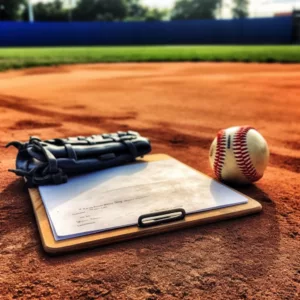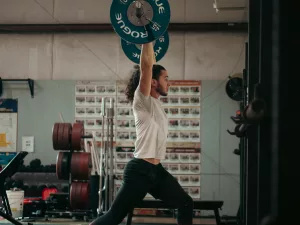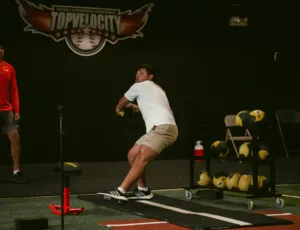Efforts to increase pitching velocity often focus solely on mechanics, but recent research indicates that this approach, without proper load management and strength training, can increase injury risk and undermine performance.
Methods for Monitoring Pitching Volume for Arm Care
Studies have shown that managing pitching loads effectively, such as monitoring the acute-to-chronic valgus workload ratio (ACVR), can significantly reduce injury risks. High ACVRs are linked to an increased likelihood of injuries, advocating for cautious monitoring of workload increases to avoid sudden spikes that can strain the throwing arm. For those of you are unfamiliar with the term, ACVR, don't worry. I am going to break down just what exactly ACVR is and how you can implement it into your training system.
Definition of ACVR
- Acute Workload: This refers to the amount of throwing and intensity in a short period, typically measured over one week. It reflects the recent load that the athlete's body has undergone.
- Chronic Workload: This represents the average amount of throwing and intensity over a longer period, such as four to six weeks. It indicates the athlete’s typical workload that their body is accustomed to handling.
The ACVR is calculated by dividing the acute workload by the chronic workload. This ratio helps coaches and sports medicine professionals assess whether an athlete is at an increased risk of injury based on sudden changes in their activity levels.
Significance of the Ratio
- Balanced ACVR: An ideal ratio is close to 1.0, where the acute workload matches the chronic workload. This balance suggests that the athlete is training at a level consistent with their usual activities, maintaining a steady state where the risk of injury is minimized.
- High ACVR: A high ratio (significantly greater than 1.0) indicates that the acute workload has spiked relative to the chronic workload. This spike can put the athlete at a higher risk of injury because it suggests an unusual increase in activity level that the body may not be prepared for, leading to overstress, particularly on the elbow's structures in pitchers.
- Low ACVR: Conversely, a low ratio (significantly less than 1.0) might suggest undertraining, where the athlete is not engaging in as much activity as they are typically accustomed to. While less risky than a high ACVR, consistently low ratios may lead to deconditioning, which could also increase injury risk when workload is eventually increased.
Resistance Training and Arm Health
While precise pitching mechanics are crucial, relying solely on these techniques without supporting them through comprehensive physical conditioning can hinder a player’s performance. Often, players believe that focusing exclusively on refining their mechanics—using only the strength they currently possess—is sufficient. However, this approach can prevent them from achieving optimal mechanics. Typically, players with inadequate pitching mechanics lack the necessary strength and force to attain positions that maximize performance. The importance of integrating resistance training into their regimen cannot be overstated. Studies like those by Zhang, HongBo et al., published in the journal Heliyon, underscore that resistance training not only enhances performance but also plays a vital role in preventing injuries. By strengthening the muscles involved in pitching, athletes can maintain optimal mechanics even under the high stress of competitive workloads, thereby achieving better overall performance and durability.
Incorporating Resistance-Based Training to Improve Pitching Volume
to Improve Pitching Volume
To ascend to higher levels of athletic performance, baseball players must enhance their ability to generate power, which encompasses both speed and strength. Studies have demonstrated that heavy load training is the most effective method to increase the body’s capacity for power generation. This type of training is particularly adept at remodeling fast-twitch muscle fibers and developing more motor units, essential components for explosive movements. Despite its proven benefits, many baseball coaches remain skeptical of heavy load training, fearing it leads to increased muscle bulk that could impede flexibility and speed. However, when implemented with low repetitions, heavy load training minimizes hypertrophy while maximizing strength and speed gains—critical for hitting the ball farther, throwing harder, and running faster. Contrary to common concerns, appropriate muscle size has been shown to enhance overall athletic performance.
For players frustrated with average bat speed, arm speed, and running speed, adopting a specialized training regimen is necessary. One of the most effective exercises for improving power is the Olympic lifts, including movements like the clean and the hang clean. Dr. Garhammar's research has highlighted the significant impact of these lifts on power production in athletes. However, the complexity of Olympic lifts is comparable to the intricacies of baseball's hitting and throwing mechanics, necessitating proper coaching. Therefore, it is crucial that athletes engage in a training program that either includes access to an Olympic Lifting specialist or provides comprehensive instructional videos that teach correct techniques. This ensures that players not only benefit from their training but also avoid potential injuries associated with improper lifting form. By integrating such specialized resistance training into their routines, baseball players can substantially increase their performance metrics across the board.
Impact of Mechanics on Injury Risk When Pitching Volume Increases
The mechanics of pitching are complex and require a finely tuned interplay between strength, flexibility, and coordination across various body parts. Consistent research findings have shown that without supportive physical conditioning, including targeted strength training, pitchers are more likely to suffer declines in performance and face higher rates of injury. This is particularly true for overuse injuries, which become increasingly prevalent when pitchers focus primarily on enhancing their throwing frequency to improve performance, neglecting the broader biomechanical demands of the sport.
A pivotal study by Bruce A. MacWilliams, PhD, and colleagues provides critical insights into the biomechanical contributions of the lower extremities in the pitching process. Their research underscores that overhand throwing is not merely an action of the arm but a coordinated effort involving all limb segments. In their study involving collegiate and high school level baseball pitchers, it was found that the lower extremities play a significant role in the dynamics of pitching. They measured the multicomponent ground-reaction forces exerted by both the push-off and landing limbs during the pitching cycle. Notably, pitchers generated shear forces equivalent to 0.35 times their body weight with the push-off leg and resisted forces up to 0.72 times their body weight with the landing leg. Furthermore, a high correlation was observed between increased leg drive and wrist velocity, highlighting the integral role of leg strength and mechanics in achieving optimal throwing performance.
This research validates the clinical perspective that poor mechanics in the throwing arm can often originate from deficiencies in the lower extremities. It suggests that strengthening the legs is not only crucial for enhancing pitching performance but also for reducing the risk of arm injuries. Effective conditioning programs for pitchers should, therefore, emphasize comprehensive physical training that includes the lower body. Exercises designed to enhance leg strength, stability, and coordination can significantly contribute to a more balanced and powerful pitching motion, ultimately minimizing the reliance on the arm alone and distributing the physical demands of pitching more evenly across the body.
By broadening the focus from arm mechanics to include the entire body, particularly the lower extremities, pitchers can achieve a more efficient and safer pitching technique. This approach helps mitigate the risk of overuse injuries by ensuring that the kinetic chain is optimized, allowing for better energy transfer throughout the body and reducing the excessive stress placed on the arm during pitches.
Top Velocity Whole Body Approach to Arm Care
At Top Velocity, we don't play around with anecdotal (people's opinions not based on evidence), we are a science-backed evidence based training system that takes into consideration all the factors mentioned above. Whether you are just setting out on your baseball career or a seasoned veteran, we have a training system for you. To ensure players start out right we have the 3X Beginner Program, which is our introduction to our training methods and how our system works. This is a great option for youth athletes from 6-12 years old. For the more advanced, the 3X Velocity Camp is your ticket to maximizing your mechanics and includes our exclusive Ai-Evaluation report and road map to 90+MPH. If you are looking for more information you can follow the link below or call us at 415-877-4850.
P.S.
Feel free to take advantage of our other free resources below!
Want a free trial to our Top Velocity Training App? Click Here to get started right away!
Related Articles
References


 to Improve Pitching Volume
to Improve Pitching Volume 

